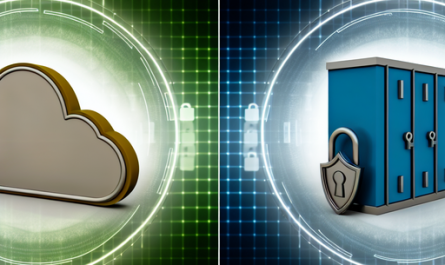In today’s digital age, data is more valuable than ever before. Whether it’s personal photos and videos, important documents for work, or sensitive information for your business, keeping your data safe and secure is of utmost importance. This is where a reliable cloud storage solution like Nextcloud comes in.
Nextcloud is a versatile and user-friendly cloud platform that allows you to store, sync, and share your files securely. With features like file versioning, encryption, and collaborative editing, Nextcloud offers a comprehensive solution for managing your data.
Get Nextcloud with 1 TB of storage for just up to €3.99 per month.
Try it now for one month free and risk-free.
If you’re looking to make the switch to Nextcloud from another cloud storage provider or local storage solution, data migration is a key step in the process. In this article, we’ll discuss some best practices for migrating your data to Nextcloud seamlessly and efficiently.
1. Assess your current data situation: Before you begin the migration process, take the time to evaluate your current data situation. Identify what types of data you have, how much data you need to move, and any potential challenges or obstacles you may encounter during the migration process.
2. Choose the right migration method: There are several ways to migrate your data to Nextcloud, depending on your specific needs and preferences. You can use Nextcloud’s built-in sync and share capabilities, manual file uploads, or third-party migration tools to transfer your files to Nextcloud.
3. Organize your data: Before you start migrating your data, it’s important to organize and clean up your files. Remove any unnecessary or outdated files, create a folder structure that makes sense for your needs, and ensure that your files are properly labeled and categorized for easy access.
4. Backup your data: Data migration always comes with a certain level of risk, so it’s essential to create a backup of your data before you begin the migration process. This way, you can rest assured that your files are safe and secure in case anything goes wrong during the migration.
5. Test the migration process: Before you fully commit to migrating all of your data to Nextcloud, it’s a good idea to test the migration process with a small sample of files. This will help you identify any potential issues or errors that may arise and allow you to make any necessary adjustments before migrating all of your data.
6. Monitor the migration process: Once you start migrating your data to Nextcloud, keep a close eye on the process to ensure that everything is running smoothly. Check for any errors or issues that may occur during the migration and address them promptly to minimize any potential impacts on your data.
By following these best practices and taking the time to plan and prepare for your data migration to Nextcloud, you can ensure a smooth and successful transition to a more secure and user-friendly cloud storage solution. Nextcloud offers a range of features and capabilities that make it an ideal choice for managing your data, so don’t hesitate to make the switch today.

